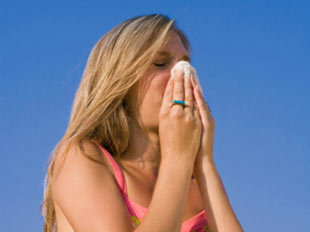Spring Reaction
 With the emergence of spring’s life-giving colors, fragrances, and weather comes an aggravation that affects 40 million Americans: allergies. If the sneezing and wheezing make you wish for cold weather, try these tips for minimizing potent reactions to nature’s bloom:
With the emergence of spring’s life-giving colors, fragrances, and weather comes an aggravation that affects 40 million Americans: allergies. If the sneezing and wheezing make you wish for cold weather, try these tips for minimizing potent reactions to nature’s bloom:
Identify triggers. A simple skin prick by an allergist can help rule out and nail down offending agents, which allows you to monitor their presence and avoid them when possible. Also, some seasonal “allergies” aren’t caused by pollen or mold (typical springtime culprits); non-allergic rhinitis impersonates hay fever, but comes and goes with humidity and temperature changes — and doesn’t respond to allergy treatments.
Get treated. Immunotherapy involves injecting gradual doses of allergens into the bloodstream to help the immune system get to know the substance slowly, scale back its harsh reaction, and respond more favorably when next exposed. Typical medications like decongestants and antihistamines can reduce symptoms… but they’re not permanent fixes and shouldn’t be used for extended periods. Another option, Nasalcrom®, stops allergic responses before they start by encasing nasal membranes in a protective coat. And Mother Nature even has solutions to her own problems: supplements that contain quercetin and vitamin C prove effective in combating symptoms.

